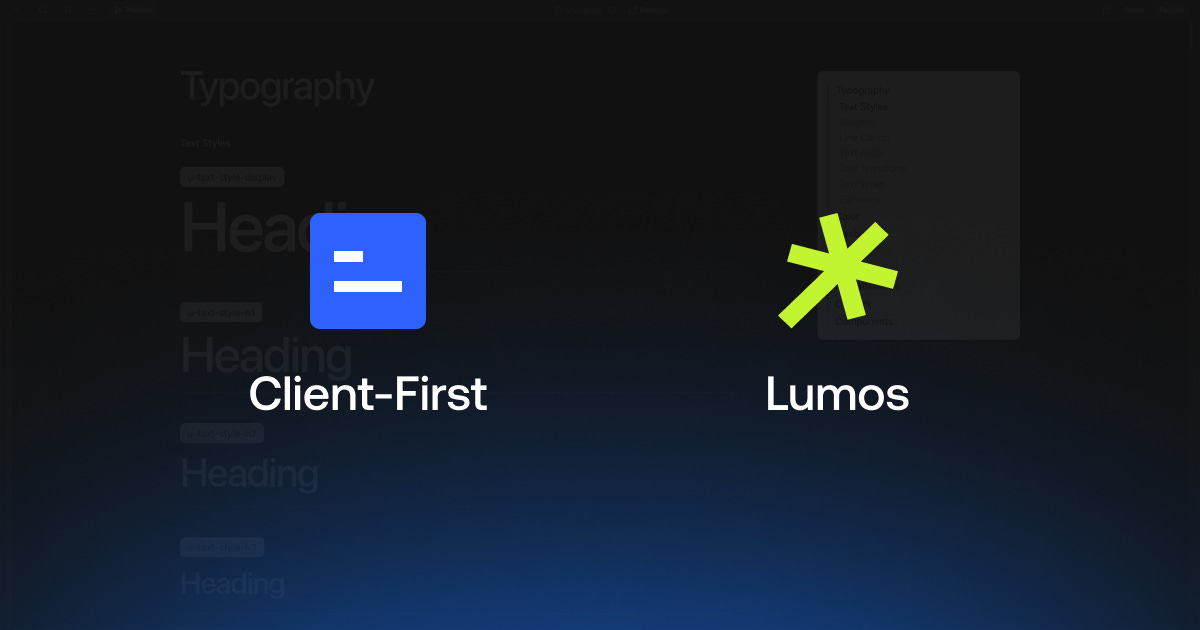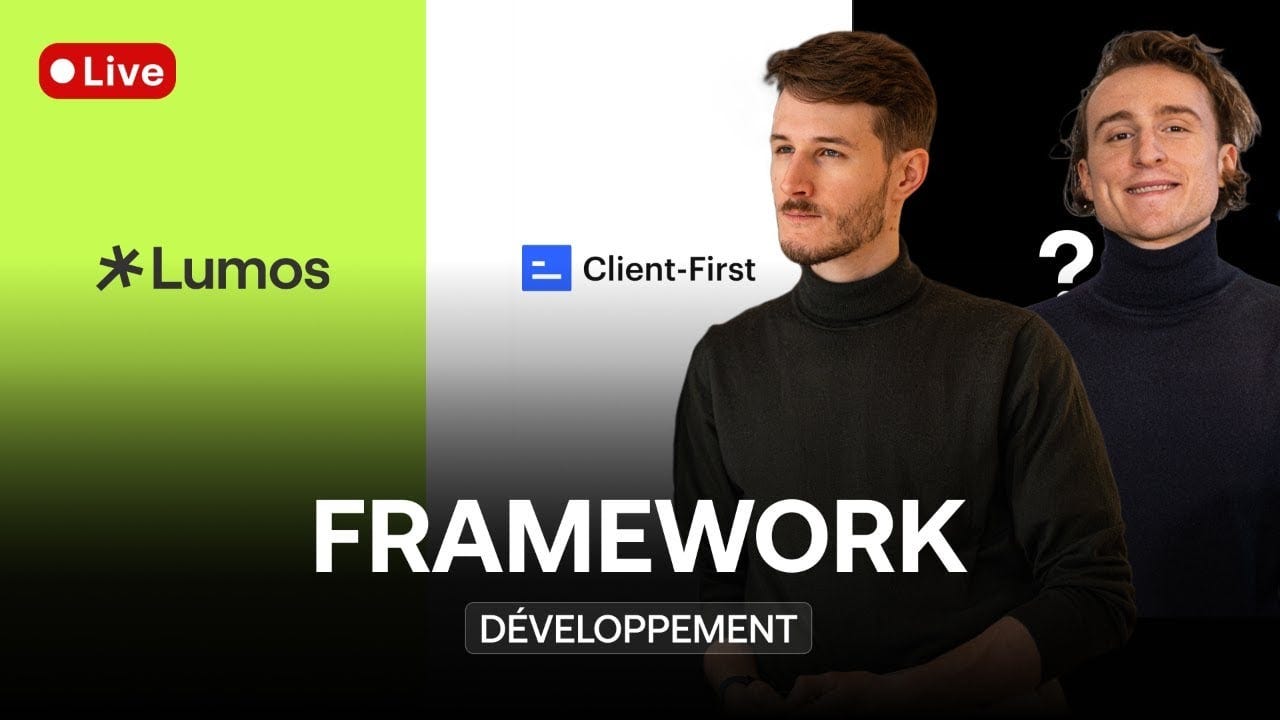Which framework to choose between Client-First and Lumos
Digidop's newsletter from April 05, 2025.
Welcome to the Digidop newsletter. Once again this week, we're bringing you the best news from the world of the web — and the Webflow ecosystem.
On the program:
Client-First or Lumos
Livestream replay
Finsweet Monthly Product Update
Client-First or Lumos
This week, we're talking about a very interesting topic: the choice of Webflow framework. We've already covered the subject in depth this week in a livestream and in a blog post comparing the two most popular frameworks: Client-First and Lumos. Today, the focus is on the newsletter.
Why this comparison?
Creating a website from scratch is often a major undertaking. That's why CSS frameworks exist: to make the task easier by providing a solid foundation with pre-configured CSS classes and a clean methodology.
Historically, Client-First has been the preferred solution for many developers, including us at Digidop, but with the evolution of Webflow and the arrival of new alternatives like Lumos, the choice is no longer so obvious.
To clarify matters, we compared Client-First and Lumos on several key criteria: ease of use, flexibility, scalability and performance - for us, the most important aspects to consider when choosing a framework.
Easy to use
In this respect, Client-First is renowned for being intuitive and accessible, making it ideal for more novice developers (but not only) or clients who want to get their hands dirty with the Designer. Lumos has a steeper learning curve: it offers a lot of functionality, which can be complex to grasp at first, even if it saves time in the long run once mastered.
Flexibility
In terms of flexibility, Client-First remains effective for simple things, but can more quickly show its limits for more complex designs, whereas Lumos is recognized for its advanced customization capabilities, thanks in particular to its more robust utility class and variable systems.
Scalability
Lumos is to scalability what Client-First is to ease of use: excellent. For projects of reasonable size, Client-First does the job, but for projects with a high scalability challenge, managing custom classes can become quite a headache. Lumos, with its component- and variable-based approach, is better suited to large-scale projects.
Performance
In terms of performance, both frameworks will remain very good if used in the right way, but Lumos will be better optimized, which will be more noticeable on very large projects (hence its excellence in terms of scalability).
Verdict
So, which framework should you choose? To sum up in two words: it depends. The choice depends on your specific needs, and those of your customers.
Client-First is particularly ideal for more junior developers, for small and medium-sized projects, or for more technical customers who want to be able to intervene in the Designer.
Lumos, on the other hand, is perfect for more advanced developers, for more complex and large projects, or for customers with a marketing profile who don't want to get their hands into the technical side of things.
At Digidop, we've always appreciated Client-First, but we're increasingly exploring Lumos for its advantages in terms of scalability and autonomy for marketing teams. It's great to have both, because the combo allows us to choose the most suitable framework for each customer or project.
To find out more, read our full article on the subject.
Livestream replay from this week
Client-First or Lumos: which framework to choose (fr) — the live discussion to compare Client-First and Lumos.
New Webflow features
Redirect tests in Webflow Optimize — users can split traffic from an origin page and direct a portion of it to a new destination page. This feature is useful for testing full-page redesigns, redirecting specific audiences to targeted landing pages, or implementing drastic changes that might conflict with existing page experiences.
Quick snaps
And last but not least, here's some of the content we've picked up this week:
Finsweet Monthly Product Update — Instagram feed, components library, Client-First.
Webflow Apps february drop — the new Webflow app released in February to schedule the publication of CMS items, generate alt texts, and enhance the custom code experience in Designer.
Hire/Not-Hired: Fast Portfolio Reviews — Flux Academy's Ran Segall reviews portfolios in 15 seconds and explains why he would hire... or not.
That's all for this week.
As always, we welcome your feedback. Reply to this e-mail to give us your opinion, tell us what you'd like to see in this newsletter or ask us any questions you may have.
Talk next week,
Lucas from Digidop



